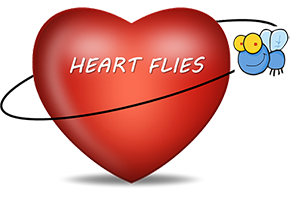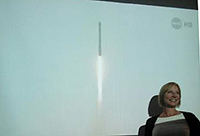
Spaceflight is known to have significant effects on numerous bodily systems, including the cardiovascular, musculoskeletal, neuroendocrine, and immune systems. Prolonged time in space causes some atrophy in astronauts’ hearts and may pose significant problems for prolonged forays to the International Space Station (ISS) and future manned missions to Mars.
We will use the fly heart as a model to identify and examine the cellular, molecular and genetic mechanisms responsible for the detrimental effects of prolonged exposure to microgravity on the heart. The fly has a heart that develops and functions in many of the same ways as the human heart. Because the fruit fly is small we can send a large number relatively inexpensively to the ISS.
The Drosophila heart model that we have developed has been used successfully to study heart development as well as cardiac dysfunction, including arrhythmias and cardiomyopathies, even the effects of diet on the heart. Hearts from both humans and flies share many of the same genes, proteins and structure. Although mice are often used for cardiovascular studies, hearts from adult mice beat more than 6 times faster than the human heart and consequently do not use the same ion channels as do human and fly hearts. Thus, we can examine the effects of prolonged space flight on heart function, contractility, structure in a system that will provide clues as to how the human heart responds.
We will also examine the effects of microgravity on flies that are genetically predisposed to two types of heart dysfunction: arrhythmia and cardiac dilation; both conditions can cause death due to heart failure in humans.
Space Flies Landed! (5/18/2014): The HEART FLIES have returned to Earth on May 18, 2014 after one full month aboard the ISS. Bodmer lab researchers with assistance from collaborators, will begin collecting and analyzing the data accumulated from the flight. See the HEART FLIES descent from space on the Dragon.

Space Flies Launched! (4/18/2014): Our first HEART FLIES mission launched on April 18, 2014 aboard SpaceX-3's unmanned Dragon spacecraft. We sent 16 groups of 25-30 flies to the ISS for a month in microgravity. These flies will spend roughly half of their lives in space! In addition, they will lay eggs in space so we will be able to study hearts from flies that have spent ALL of their life in space.